Deven Santosh Shah
Decoding News Bias: Multi Bias Detection in News Articles
Jan 05, 2025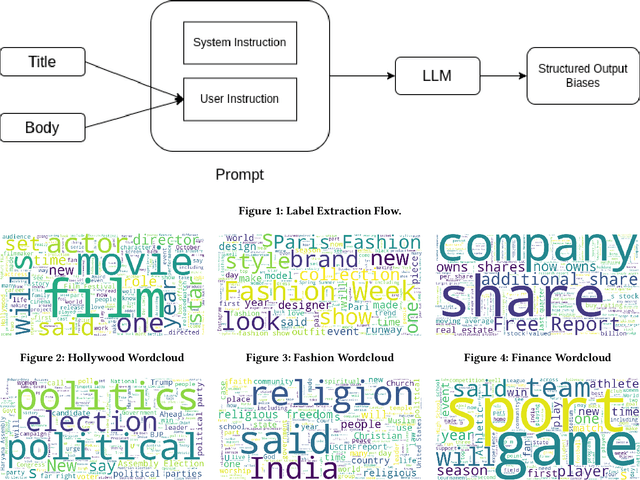

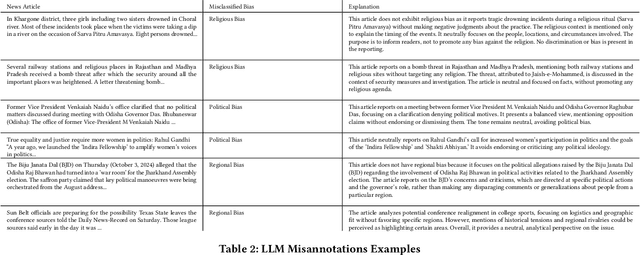
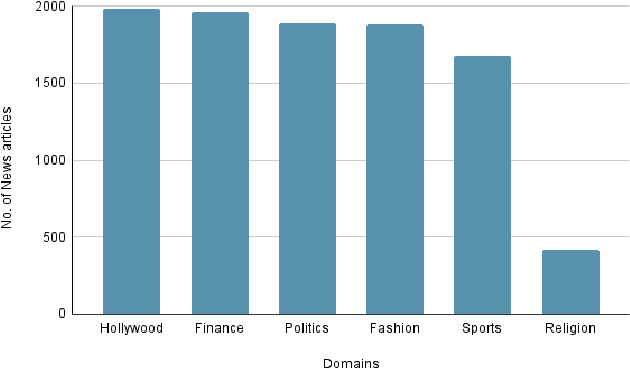
Abstract:News Articles provides crucial information about various events happening in the society but they unfortunately come with different kind of biases. These biases can significantly distort public opinion and trust in the media, making it essential to develop techniques to detect and address them. Previous works have majorly worked towards identifying biases in particular domains e.g., Political, gender biases. However, more comprehensive studies are needed to detect biases across diverse domains. Large language models (LLMs) offer a powerful way to analyze and understand natural language, making them ideal for constructing datasets and detecting these biases. In this work, we have explored various biases present in the news articles, built a dataset using LLMs and present results obtained using multiple detection techniques. Our approach highlights the importance of broad-spectrum bias detection and offers new insights for improving the integrity of news articles.
Local Life: Stay Informed Around You, A Scalable Geoparsing and Geotagging Approach to Serve Local News Worldwide
May 11, 2023Abstract:Local news has become increasingly important in the news industry due to its various benefits. It offers local audiences information that helps them participate in their communities and interests. It also serves as a reliable source of factual reporting that can prevent misinformation. Moreover, it can influence national audiences as some local stories may have wider implications for politics, environment or crime. Hence, detecting the exact geolocation and impact scope of local news is crucial for news recommendation systems. There are two fundamental things required in this process, (1) classify whether an article belongs to local news, and (2) identify the geolocation of the article and its scope of influence to recommend it to appropriate users. In this paper, we focus on the second step and propose (1) an efficient approach to determine the location and radius of local news articles, (2) a method to reconcile the user's location with the article's location, and (3) a metric to evaluate the quality of the local news feed. We demonstrate that our technique is scalable and effective in serving hyperlocal news to users worldwide.
What's happening in your neighborhood? A Weakly Supervised Approach to Detect Local News
Jan 15, 2023



Abstract:Local news articles are a subset of news that impact users in a geographical area, such as a city, county, or state. Detecting local news (Step 1) and subsequently deciding its geographical location as well as radius of impact (Step 2) are two important steps towards accurate local news recommendation. Naive rule-based methods, such as detecting city names from the news title, tend to give erroneous results due to lack of understanding of the news content. Empowered by the latest development in natural language processing, we develop an integrated pipeline that enables automatic local news detection and content-based local news recommendations. In this paper, we focus on Step 1 of the pipeline, which highlights: (1) a weakly supervised framework incorporated with domain knowledge and auto data processing, and (2) scalability to multi-lingual settings. Compared with Stanford CoreNLP NER model, our pipeline has higher precision and recall evaluated on a real-world and human-labeled dataset. This pipeline has potential to more precise local news to users, helps local businesses get more exposure, and gives people more information about their neighborhood safety.
Distantly Supervised Semantic Text Detection and Recognition for Broadcast Sports Videos Understanding
Oct 31, 2021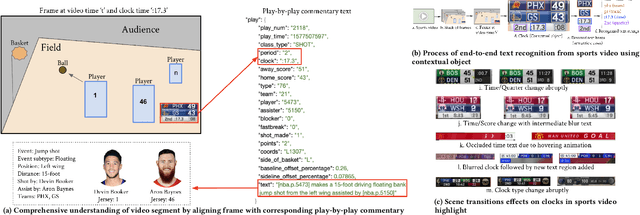
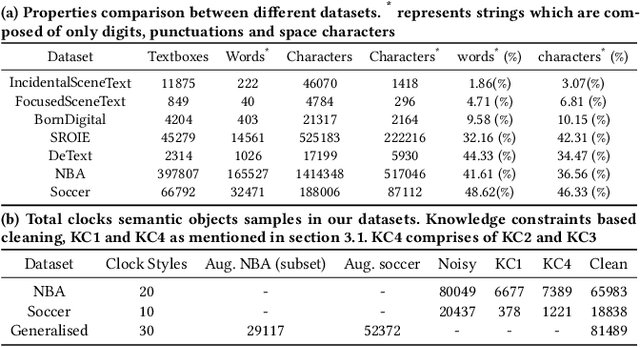

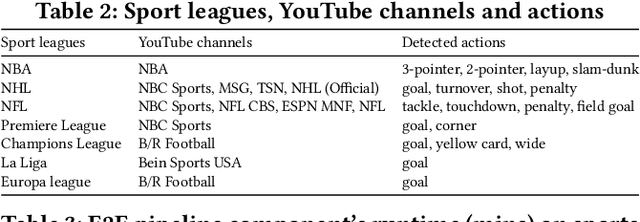
Abstract:Comprehensive understanding of key players and actions in multiplayer sports broadcast videos is a challenging problem. Unlike in news or finance videos, sports videos have limited text. While both action recognition for multiplayer sports and detection of players has seen robust research, understanding contextual text in video frames still remains one of the most impactful avenues of sports video understanding. In this work we study extremely accurate semantic text detection and recognition in sports clocks, and challenges therein. We observe unique properties of sports clocks, which makes it hard to utilize general-purpose pre-trained detectors and recognizers, so that text can be accurately understood to the degree of being used to align to external knowledge. We propose a novel distant supervision technique to automatically build sports clock datasets. Along with suitable data augmentations, combined with any state-of-the-art text detection and recognition model architectures, we extract extremely accurate semantic text. Finally, we share our computational architecture pipeline to scale this system in industrial setting and proposed a robust dataset for the same to validate our results.
 Add to Chrome
Add to Chrome Add to Firefox
Add to Firefox Add to Edge
Add to Edge